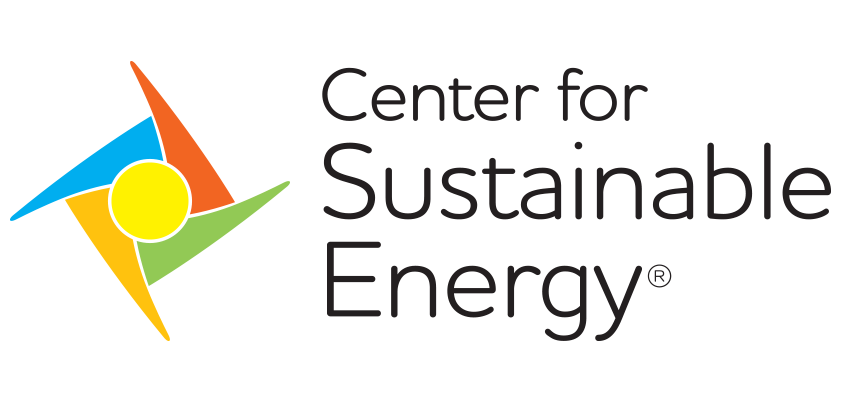5 Steps to Using Holistic Planning to Meet Clean Energy Goals

As more states, counties, and cities consider ways to pursue a clean energy economy, holistic and strategic planning will be essential to success.
The process of establishing a strategic vision and mapping out goals can set decision-makers on the path to inclusive and effective leadership. While there are many strategies for setting and meeting clean energy goals, the following five steps are key.
1. Define a Robust Public Engagement Process
A broad energy plan is intended to define a vision for a state or city and set a path forward, so ensuring that the vision aligns with the priorities and needs of the community and stakeholders at the onset is critical. Engaging the public during the early planning phase, rather than during the process of defining detailed implementation, helps ensure policymakers:
- Understand community priorities
- Identify actors and issues that need consideration
- Leverage resources and expertise of community groups, industry stakeholders, and other relevant actors, such as research or academic institutions
- Identify potential roadblocks and points of opposition, as well as additional opportunities
- Encourage participation in resulting programs
It is important to offer multiple opportunities for public engagement and provide widespread notice. For example, the New Jersey Board of Public Utilities held eight workshops when developing the state’s 2019 Energy Master Plan, as well as gathered information through public comments, workshops, and a webinar. A case study of Oregon’s stakeholder engagement regarding the state’s power sector found that bringing new voices to the table helped identify new approaches to the issues. Robust participation at the start is more likely to carry forward as a jurisdiction begins to develop policies and programs to carry out the vision.
2. Establish Guiding Principles, Long-Term Goals and Milestones
Establishing guiding principles, with input from the community and stakeholders, provides a framework for developing policies and programs that reflect the priorities of a given city or region. Following these principles, a holistic plan should clearly outline long-term goals. Finally, integrating milestones into plans helps jurisdictions measure success toward their goals. A holistic framework that has been vetted by the public and stakeholders sends a strong signal to market actors as they consider making investments in clean energy initiatives.
3. Identify Incremental Targets and Implement Data-Driven Programs
While policy often sets long-term, overarching clean energy goals, setting near-term targets can help states and cities closely track and achieve progress toward these goals. For example, in 2017, according to the American Council for an Energy-Efficient Economy (ACEEE), states with an Energy Efficiency Resource Standard (EERS) achieved incremental electricity savings of 1.2% of retail sales on average, compared with average savings of 0.3% in states without an EERS. Of the top 20 electricity-saving states, 19 had an EERS in place. Establishing targets also helps inform program development and funding needs as they are incorporated into strategic plans.
To track progress toward such targets and ensure effectiveness of climate action programs, data transparency and insights are essential. Clean energy programs that do not effectively incorporate data into their design, implementation, and impact evaluation fail to track progress and efficacy that can improve program design and public policy. States and cities should ensure policymakers and program administrators can access the data they need and should make data an essential part of program design, implementation and evaluation. In addition, insights should be made publicly available in a transparent way through user-friendly dashboards and supporting data tools. For example, CSE provides dashboards for the Connecticut Hydrogen and Electric Automobile Purchase Rebate (CHEAPR) and the Massachusetts Offers Rebates for Electric Vehicles (MOR-EV) programs, which include survey results, data visualizations, and other important insights. This transparency is necessary for policymakers and the general public to understand the impacts of the program, particularly for communities disproportionately impacted by environmental and socio-economic burdens.
4. Integrate Planning Efforts, Resources and Strategies
Throughout the planning process, states and cities should take a holistic view of their strategies and goals and seek ways to integrate efforts across sectors to maximize benefits within the greater energy system. Strategies to promote EV adoption need to be paired with investments in EV infrastructure. Energy efficiency initiatives should be accompanied by load management strategies and other distributed energy resources. A fully integrated approach leverages various strategies and technologies together to achieve clean energy goals. For example, Carlsbad, California, selected CSE to advise the city on the adoption of ordinances to address solar requirements, alternative energy water heating, energy efficiency, and EV charging infrastructure standards.
To facilitate integrated strategies, policymakers should:
- Include flexibility in program and policy design to allow for innovative approaches
- Establish success metrics that can be met through various strategies [e.g., whole-building greenhouse gas emissions reductions]
- Maintain a “one-stop-shop” for technical and financial resources
- Allow various program incentives to be “stacked”
- Consider workforce development programs focused on integrating systems
5. Prioritize Equity at All Stages
Equity should be built into every stage of policy-setting and decision-making processes. Low-income households and communities of color are disproportionately affected by pollution and other environmental impacts. Yet they have been underrepresented or excluded in policy-setting or decision-making processes and often have not benefited from government investments in clean energy resources. The result has been environmental injustice.
A first step to incorporating equity principles in clean energy policies and programs goes back to the first element we outlined: public engagement. One way to gather feedback and allow for community decision-making is for an agency to establish advisory committees composed of representatives from these communities. This type of committee ensures that a policy or program is accessible to residents and that impacted communities can inform policy and program design, implementation and evaluation.
CSE has found that a key component of this strategy is to partner with community-based organizations (CBOs) and to compensate them for their time and expertise. These organizations are trusted as credible sources of information for the communities they represent. CBOs are also experts in providing meaningful outreach that meets their communities’ multilingual and cultural needs. CSE has found that partnerships with CBOs are more successful when these organizations are included in the design phase of an outreach and education plan prior to implementation. Additionally, CSE strongly recommends communicating progress to communities on an ongoing basis to ensure transparency and help build trust in the process.
Developing a roadmap for clean energy goals with early engagement of all communities, clear principles and goals, transparent and data-driven metrics, and a holistic view of integrating efforts across sectors can optimize results for clean energy leaders.

